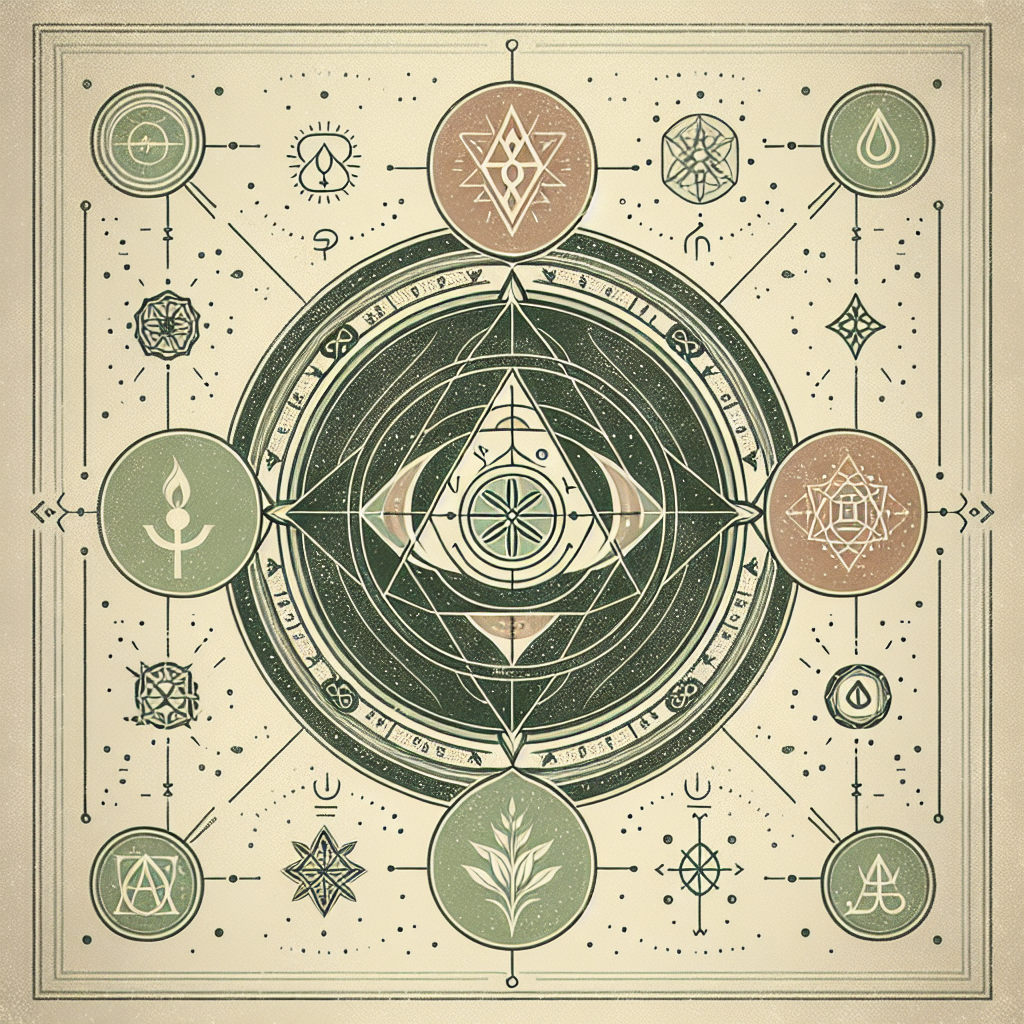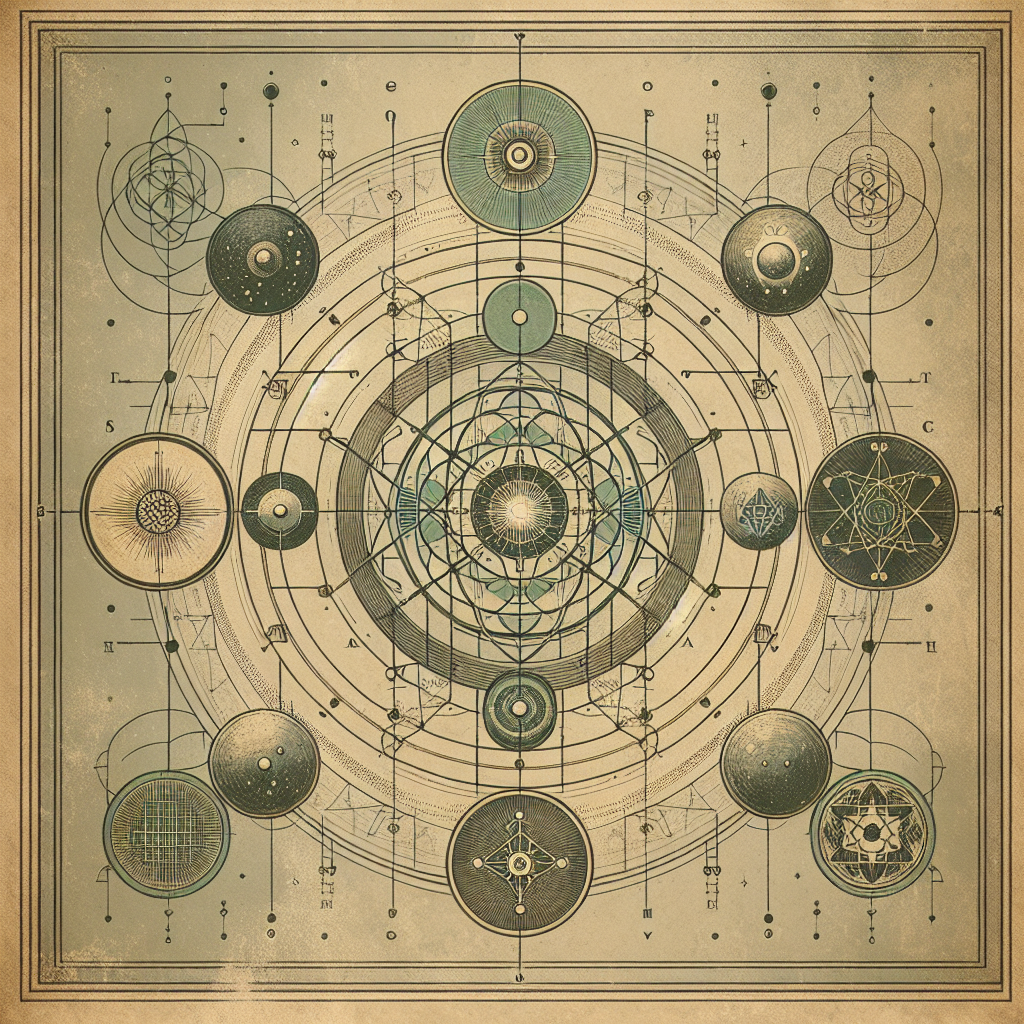
Introduction
Alchemy (Arabic: al-kīmiyā’ الكيمياء; Greek: khēmeía/chēmeía χημεία) is a premodern tradition of natural inquiry and craft that sought to understand and transform matter. Historically, its aims included chrysopoeia (the transmutation of “base” metals into silver or gold), preparation of life-prolonging or curative elixirs, and the pursuit of a universal reagent often called the philosopher’s stone. Modern historians emphasize that Alchemy combined hands-on laboratory practice with theories of matter and nature; it was not simply “magic” or fraud, nor was it identical with later Chemistry, though it helped to shape it. The etymology of “alchemy” is debated, reflecting its passage through Greek, Arabic, and Latin, and its hybrid Greco-Arabic formation in late antiquity and the medieval period. [3]
How It Started & Developed
The earliest securely identifiable strata of what became Alchemy are Greek technical recipes and treatises from Hellenistic and late antique Egypt (3rd–4th centuries CE), and the writings of figures such as Zosimos of Panopolis (fl. c. 300 CE, Egypt). These sources mingle practical metallurgy, dyeing, and glassmaking with philosophical reflections on matter and change. [1][3]
From the 8th to 10th centuries, Arabic-speaking scholars adapted, translated, and expanded this material. In the Islamicate world, authors associated with the “Jābirian corpus” (attributed to Jābir ibn Ḥayyān/Geber, 8th–9th centuries) systematized theories of metallic composition and laboratory operations; their works, along with related hermetic and technical texts, were translated into Latin from the 12th century onward and helped seed Latin alchemical traditions. [1][3]
In medieval and early modern Europe, the tradition diversified. “Scholastic” Latin works developed the influential sulfur–mercury theory of metals and debated the possibility and limits of transmutation. By the 16th century, Paracelsus (Theophrastus Bombast von Hohenheim, 1493–1541) reoriented parts of the art toward medical goals, introducing the triad sulfur–mercury–salt (tria prima) and promoting chemically prepared remedies; this strand is often called iatrochemistry or spagyria. [1][3]
Seventeenth-century “chymistry” (a period term covering both Alchemy and Chemistry) overlapped with the experimental culture of the Scientific Revolution. Robert Boyle (1627–1691) and Isaac Newton (1642–1727), among others, read, critiqued, and practiced Alchemy alongside broadly empirical investigations. Historians now stress that certain alchemical practices and debates about matter, analysis, and synthesis fed into early modern theories of particles and corpuscles and into laboratory methods—a trajectory that scholars have linked to the experimental origins of the Scientific Revolution. [2]
Main Beliefs & Practices
Despite regional and chronological variety, several themes recur:
-
Aims. Practitioners sought the philosopher’s stone (lapis philosophorum) to perfect metals and sometimes human bodies, and elixirs or quintessences for healing or longevity. Many also pursued specific products—pigments, acids, alloys, medicines—and refined analytical and synthetic techniques. Robust clinical evidence for spagyric/elixir efficacy by modern standards is lacking; historians treat these aims as part of premodern medical and cosmological frameworks, not as validated therapies. [1][3]
-
Theories of matter. Classical and medieval authors debated the elemental makeup of metals—commonly via sulfur–mercury theories—while early modern Paracelsians added sulfur, mercury, and salt as three “principles.” These discussions mattered for what counted as an element, compound, or “analysis,” and they informed later corpuscular and atomic conceptions, and later Chemistry. [2][3]
-
Operations and apparatus. Alchemical practice relied on furnaces (athanors), crucibles, cucurbits and alembics for distillation, retorts, water baths, and controlled heating regimens. Standard operations included calcination, dissolution, filtration, distillation, sublimation, coagulation, and fixation. Mastery lay as much in disciplined repetition and apparatus management as in theory. [1][3]
-
Language and secrecy. Texts often used allegory, emblematic imagery, and “Decknamen” (coded names like “Green Lion” or “philosophical mercury”) to veil procedures. This secrecy reflected workshop norms, patronage politics, and hopes of protecting potent knowledge and its mystery—not merely mystification for its own sake. [1]

Membership & Initiation
Alchemy was not a single, centralized order. It functioned through master–apprentice training, household and court workshops, artisanal lineages, and scholarly correspondence. Skills were imparted through hands-on work—firing regimes, handling corrosives, observing color and odor changes—alongside reading and glossing of authoritative texts. Printed books and emblematic suites appeared from the 16th century, but guarded knowledge persisted, perhaps to preserve competitive advantage or to satisfy patrons who sponsored costly experiments. [1][4]
In late medieval and Tudor–Stuart England, for example, alchemists sought licenses, monopolies, or stipends by promising practical outcomes (metallic transmutation, mineral refining, saltpeter, “universal medicines”) to royal and aristocratic patrons. The record shows a spectrum—from learned clerics and physicians to skilled artisans—coalescing around projects that combined reading, replication, and experimental innovation. Initiation here meant gaining a place in a working circle, not a formal rite; acceptance typically required demonstrated competence and credible results in small-scale trials. [4]
Its Influence & Modern Forms
-
On science and medicine. By the 17th century, “chymistry” contributed to methods of analysis and to matter theories that informed Boyle’s and others’ corpuscularism. Historians argue that alchemists helped establish operational criteria for elements and analysis by separation, providing a substrate for later Chemistry, even as Enlightenment chemists retrospectively demarcated “alchemy” as irrational. [2][3]
-
On language and material culture. Modern vocabulary (alcohol, alkali, elixir) and apparatus (alembics, retorts) preserve Alchemy’s legacy. The tradition also circulated powerful images—the Rebis, the alchemical king and queen, emblem-books like the Rosarium—that influenced art and literature. [1][3]
-
Newton and learned chymistry. Newton devoted decades to alchemical reading and benchwork, compiling extensive notebooks and attempting to decode and test alchemical processes. Recent scholarship interprets this not as a lapse into irrationality but as part of a broader, exacting experimental program in which alchemical analysis/synthesis and laboratory replication aided his natural inquiries—as well as a genuine pursuit of the “great work.” [1][2]
-
Modern occult and psychological readings. From the 19th century onward, alchemical symbols have been reinterpreted in esoteric movements and in Jungian psychology as maps of inner change. Historians differentiate these modern receptions from historical practice; they are culturally influential, but they do not describe what premodern alchemists actually did in laboratories. [1]
-
Contemporary “spagyric” and wellness claims. Some alternative-health communities market “alchemical” tinctures or processes. Peer-reviewed clinical evidence for unique efficacy beyond conventional pharmacognosy is limited; responsible scholarship treats such claims cautiously and distinguishes historical description from medical endorsement. [1][3]
In sum, Alchemy was a long-lived, internally diverse tradition linking hands-on experiment to ambitious theories of nature and transformation. It thrived at the crossroads of craft, natural philosophy, and medicine; its laboratory disciplines and matter theories fed into early modern “chymistry” and, indirectly, into the emergence of Chemistry—while its symbols and myths continue to be reimagined. [1][2][3][4]
Sources
[1] Lawrence M. Principe, The Secrets of Alchemy, 2013. A leading scholarly synthesis of alchemy’s history, theories, practices, and modern receptions. University of Chicago Press. https://press.uchicago.edu/ucp/books/book/chicago/S/bo12335123.html
[2] William R. Newman, Atoms and Alchemy: Chymistry and the Experimental Origins of the Scientific Revolution, 2006. Demonstrates alchemy’s role in early modern matter theory and experimental method. University of Chicago Press. https://press.uchicago.edu/ucp/books/book/chicago/A/bo3750417.html
[3] Encyclopaedia Britannica, “Alchemy,” latest revision accessed 2025. Concise, vetted overview; useful for definitions, scope, and historical framing. https://www.britannica.com/topic/alchemy
[4] Jennifer M. Rampling, The Experimental Fire: Inventing English Alchemy, 1300–1700, 2020. Detailed study of English alchemical communities, practice, and patronage. University of Chicago Press. https://press.uchicago.edu/ucp/books/book/chicago/E/bo50462000.html